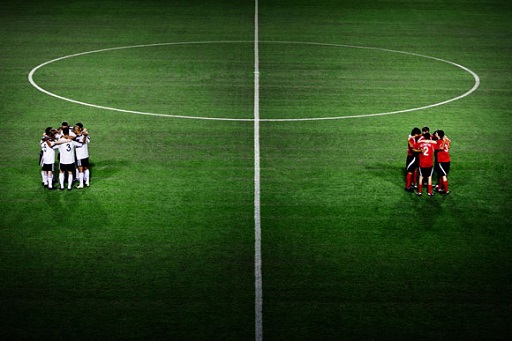4 Building team resilience
It benefits both coaches and sport psychologists to understand how teams should collectively perform when under pressure and in the face of setbacks (Morgan, Fletcher and Sarkar, 2017). You read in Session 1 that team resilience is a shared experience and, as such, research suggests that a programme aimed to build resilience in teams should open by involving team members in conversations about their own team’s resilience (Morgan, Fletcher and Sarkar, 2013). This might also involve using measures such as the Characteristics of Resilience in Sports Teams (CREST) questionnaire [Tip: hold Ctrl and click a link to open it in a new tab. (Hide tip)] (Decroos et al., 2017; the questionnaire is in the appendix of the article).
In Activity 4, you will hear further input from Dr Mustafa Sarkar on building team resilience and examine research that followed a rugby union team throughout a season (an example of longitudinal research design) to study how they were able to promote the development of their resilience.
Activity 4 Working with teams to build resilience
First, listen to the second extract from the podcast that you first accessed in Session 1. In this part of the audio, Dr Mustafa Sarkar outlines the importance of leadership in building team resilience.
Transcript: The importance of team resilience
Next, having listened to the audio, note down your understanding of ‘shared leadership’ and reflect on the findings of resilience across a variety of sports.
Discussion
In the second extract from the podcast, Dr Sarkar highlights the importance of sharing leadership throughout the team in order to support the development of resilience. He uses the example of the World Cup winning Rugby Union coach, Clive Woodward, who stressed the need for an exceptional leader among a group of great leaders. Dr Sarkar noted that by having a leadership group there are more people to be accountable when setbacks occur, to share the responsibilities of the outcome of the performance.
As highlighted in the podcast, although there are consistencies between the resilience found in teams across a variety of sports, there will be some contextual differences.
Now read the reading at the following link, which is a section from an article called ‘Developing team resilience: a season-long study of psychosocial enablers and strategies in a high-level sports team’ (Morgan, Fletcher and Sarkar, 2019). It explores the enablers and strategies that promote the development of team resilience.
Reading: Developing team resilience
Finally, drawing from the key points raised in both the podcast and the article, consider how you might apply these to one of the following:
- your own team, or one that you work with or follow, or
- the relay coach that works with the women’s Team GBR 4 x 100m squad.
Discussion
If you chose to apply the key points from the resources to your own examples, there are likely to be some variations.
If you chose to apply the key points from the podcast to the relay coach, you might have reflected that they might face a potential challenge of having a leadership group in such a small team but that as each sprinter had responsibility for each leg of the relay, you could argue that there was a natural sharing of responsibilities. This is supported by the findings of Morgan, Fletcher and Sarkar (2019) who call for the development of a team regulatory system founded on this ownership and responsibility. The relay coach should also emphasise the importance of cultivating team identity (e.g. all athletes wear team kit) and create a selfless culture, as opposed to a blame culture. The coach should pose challenges to the team during training but maintain the importance of enjoyment, and a positive outlook when faced with adversity.
Looking more broadly than the team, research findings from Fasey et al. (2021) indicate that organisations such as schools, clubs and governing bodies approaching the development of resilience can look to their own structures, in addition to focusing on the creation of an environment that balances appropriate challenge and support for athletes and coaches, as has been discussed in this session.
You’ll now turn your attention to how the development of resilience can be supported as an athlete navigates through their athletic development journey.

